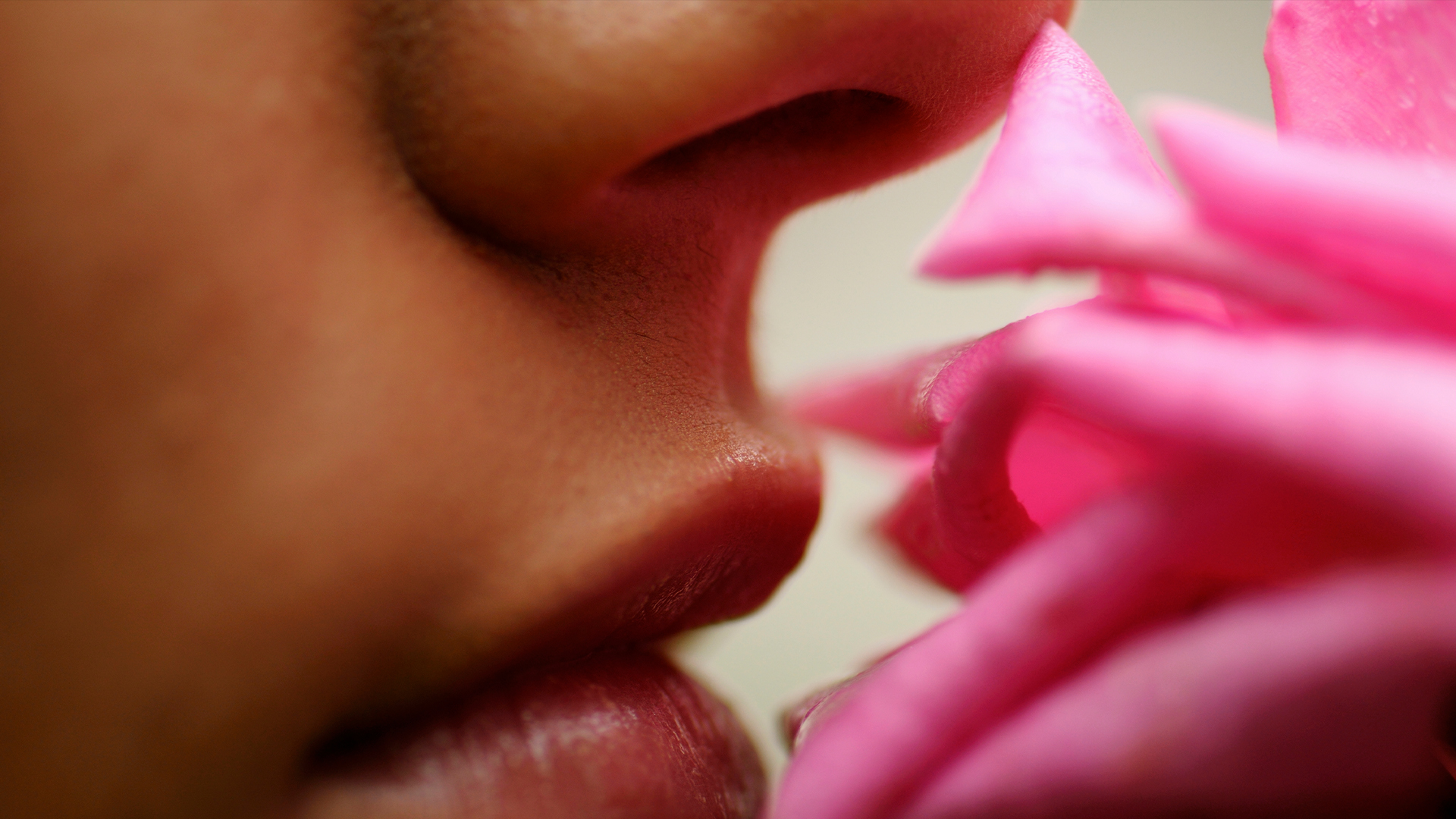
Although humans smell with two nostrils, we can only detect a given scent as a whole — a steaming cup of coffee or pungent skunk, for instance. But your brain might interpret things differently, a new study suggests.
The research, conducted with hospital patients with electrodes implanted in their brains, suggests that the smells flowing through each nostril are processed as two separate signals in the part of the brain that receives smell inputs. Notably, the signals are separated in time.
The fact that the two signals may not be integrated in the brain's smell-processing center suggests there might be some advantage to keeping them separate, the researchers theorized. The research could improve our understanding of the neuroscience of smell, which is less understood than vision and hearing. We know that the brain takes the differing data from both eyes and ears into account, for instance, and maybe a similar system exists for smell.
The researchers were curious as to how the brain makes use of these two sensory inputs from the nose, said Gulce Nazli Dikecligil, a postdoctoral researcher in the University of Pennsylvania Department of Neurology and the lead author of the study, published this month in the journal Current Biology.
Related: Why can't we smell ourselves as well as we smell others?
For the study, the researchers attached tubes to the insides of the nostrils of 10 volunteers who previously had electrodes implanted in their brains to diagnose and treat drug-resistant epilepsy. The scientists then piped three scents — coffee, banana and eucalyptus — into each volunteer's left and right nostrils, separately, as well as both nostrils simultaneously. They also pumped in odorless air, for comparison.
They asked the patients to identify the smells and recorded the patients' brain activity, specifically in the piriform cortex, the main part of the cortex that processes smells.
Smell signals from each nostril took a different amount of time to be encoded by each side of the piriform cortex. The signals were encoded about 480 milliseconds faster to the side of the cortex that correlated with the nostril detecting the smell — so, if the patient smelled banana using the right nostril, that information would travel faster to the right side of the cortex than to the left.
The researchers observed the same effect when the scent was introduced to both nostrils; the average time between encoding for each nostril was about 500 milliseconds.
"The brain seems to be maintaining, at least at the level of cortex that we were looking at, two representations — one corresponding to each nostril," Dikecligil told Live Science.
They used machine learning to further analyze the signals and decipher which scents corresponded to what brain activity. This revealed that, although the two signals were separated in time, they resulted in very similar electrical patterns. However, there were still noticeable differences in the patterns for seven of the 10 patients, meaning there could be some differences in how the brain processes smells from each nostril.
This time difference between the signals didn't seem related to how well participants could identify a smell. They were equally accurate for smells in either nostril and slightly more accurate for smells delivered to both nostrils.
Overall, participants encoded information faster when they smelled a scent with both nostrils, although the time difference between the two nostril signals remained similar. This could be because they got twice the amount of odor or because of a computational advantage, but the researchers aren't sure.
The research isn't the first to find that the nostrils might operate individually or differently. A 1999 study published in the journal Nature found that differences in airflow could sensitize each nostril to different scents. But the recent study is the first to use data from patients with electrodes in their brains and to find the observed time delay.
Future research could investigate if humans use the smell inputs from each nostril in a similar way to the visual data from our eyes, or auditory inputs from our ears. Differences in our vision from each eye give us depth perception, for instance, and we have a similar system for hearing.
"We have two sensory organs for most sensory systems," Dikecligil said. "Maybe there's an overarching principle that guides all of them in terms of how they utilize and compare and contrast [information]."
Ever wonder why some people build muscle more easily than others or why freckles come out in the sun? Send us your questions about how the human body works to community@livescience.com with the subject line "Health Desk Q," and you may see your question answered on the website!
!["[T]he First and Fifth Amendments Require ICE to Provide Information About the Whereabouts of a Detained Person"](https://images.inkl.com/s3/publisher/cover/212/reason-cover.png?w=600)






